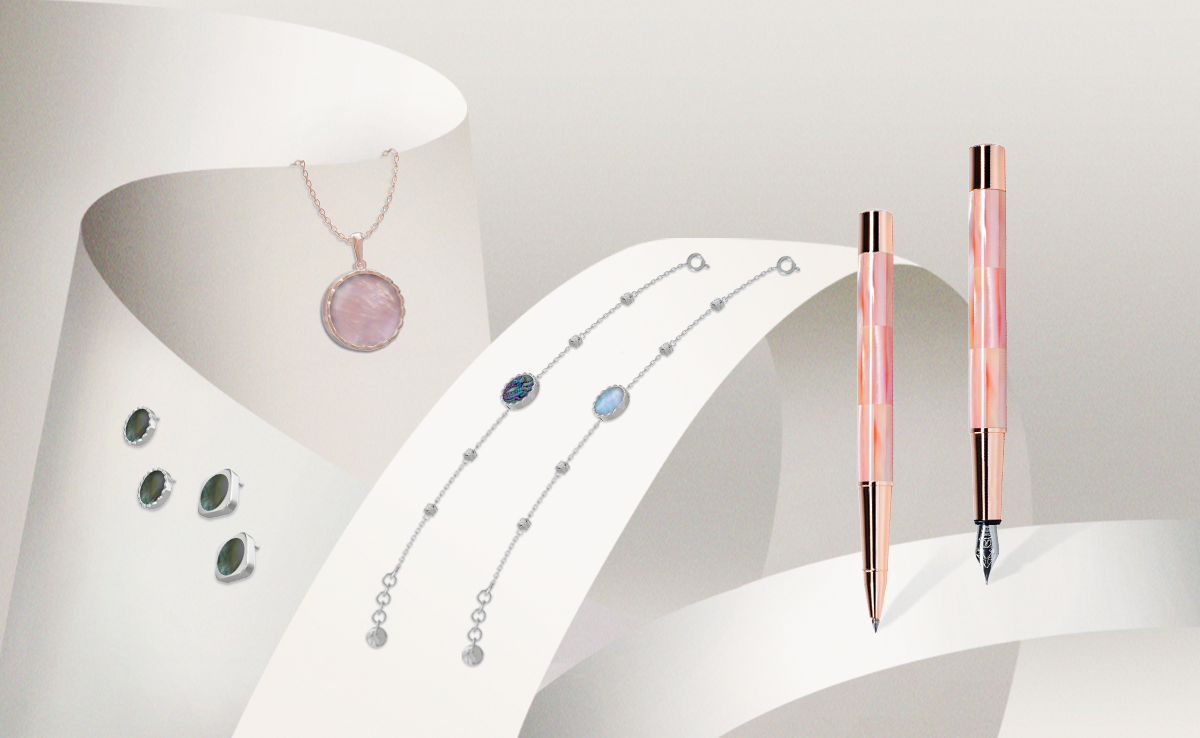DEVELOPMENT HISTORY
Experiencing thousands of years with ups and downs throughout history, the mosaic profession seems to have been lost in time, but it is the talented and dedicated artisans who always care about preserving the traditional cultural values helped the craft of mosaic still exist and develop.
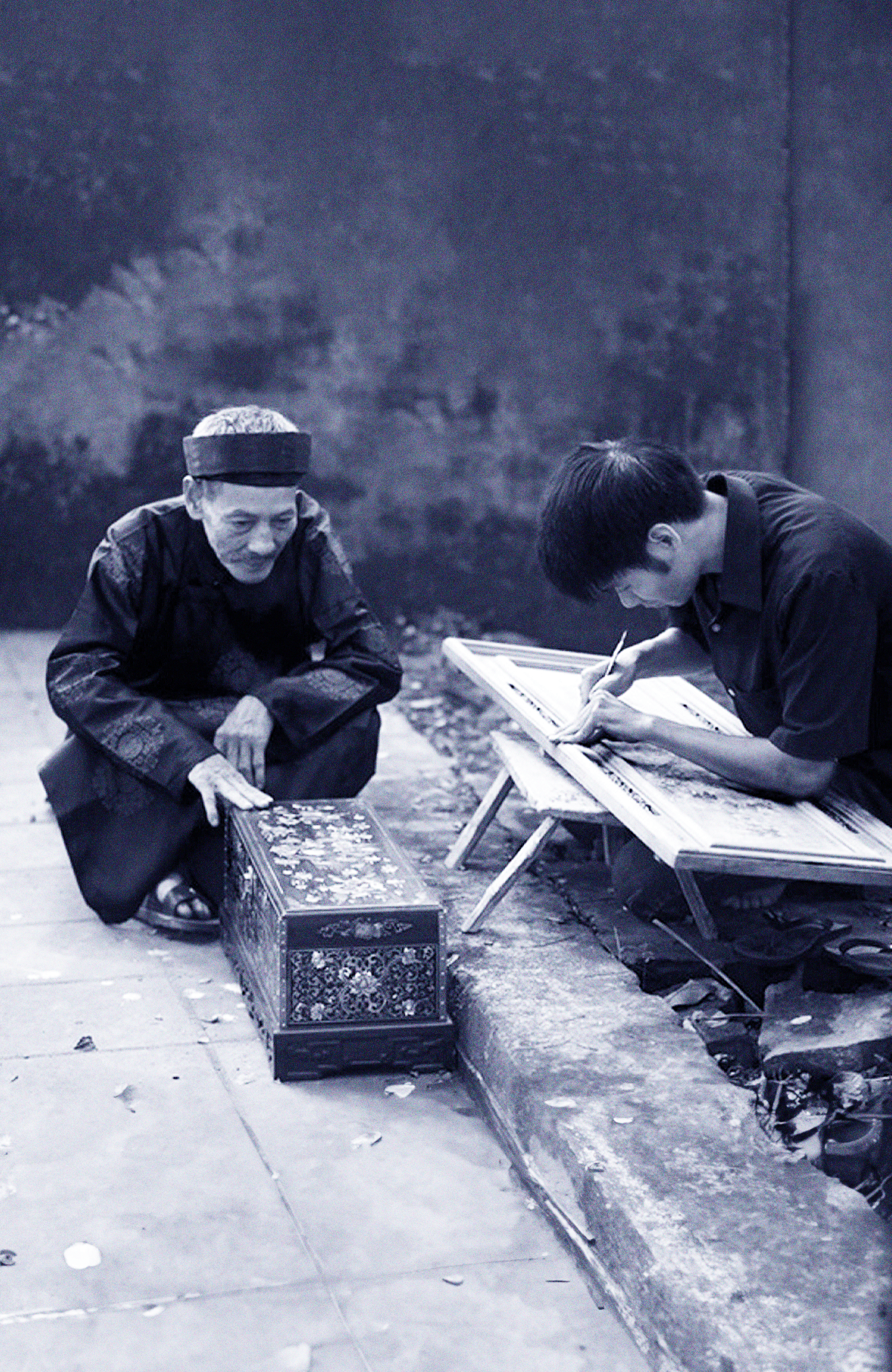
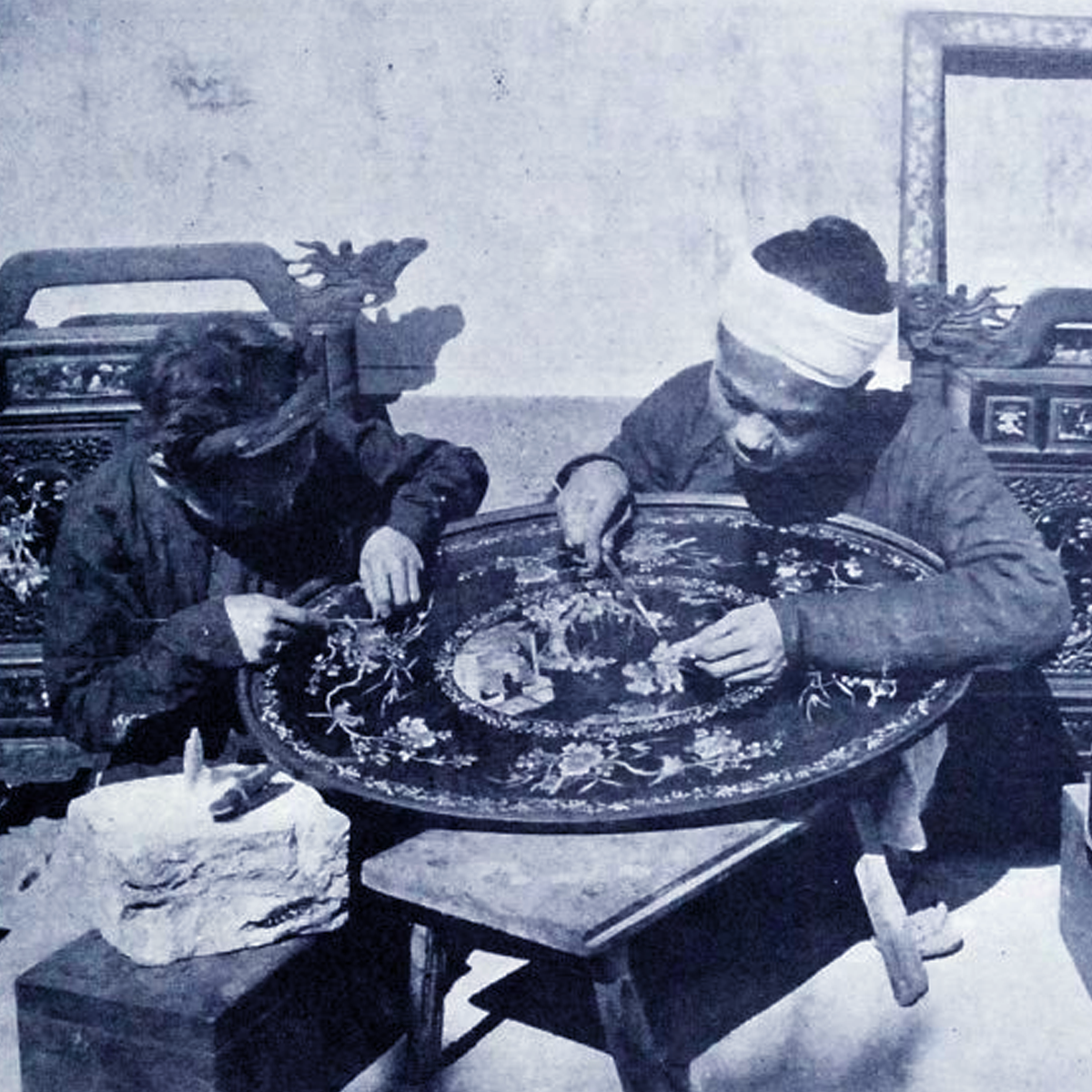
According to historical records, mosaic craft in Vietnam appeared from the Northern period during the 3rd-5th century. According to legend, this craft village was formed on the lower reaches of the Red River. Mr. Ninh Huu Hung - a general under King Dinh and King Le, is the ancestor of mosaic craft. He was also meritorious official, who help the dynasty to conquer 12 warlords and build the ancient capital of Hoa Lu, Ninh Binh.
Not only that, he was also the first Ninh in Vietnam. La Xuyen, Ninh Xa Yen Ninh commune, Y Yen district, Nam Dinh province became a place to worship and honor him as the Grand Master of the Craft Village. Today, in the traditional handicraft villages, there are generations of descendants of the Ninh family. They are very good and skilled.
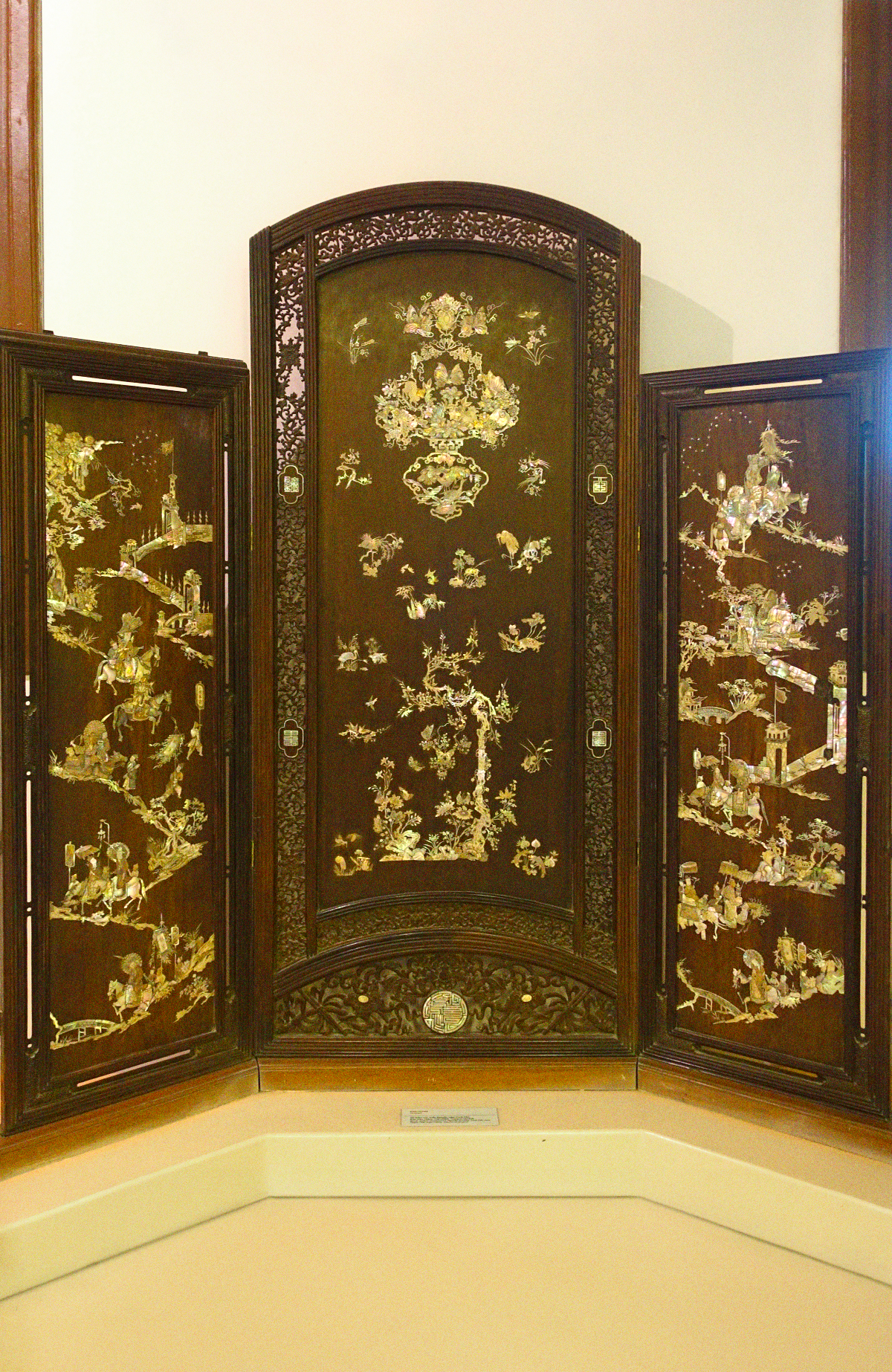
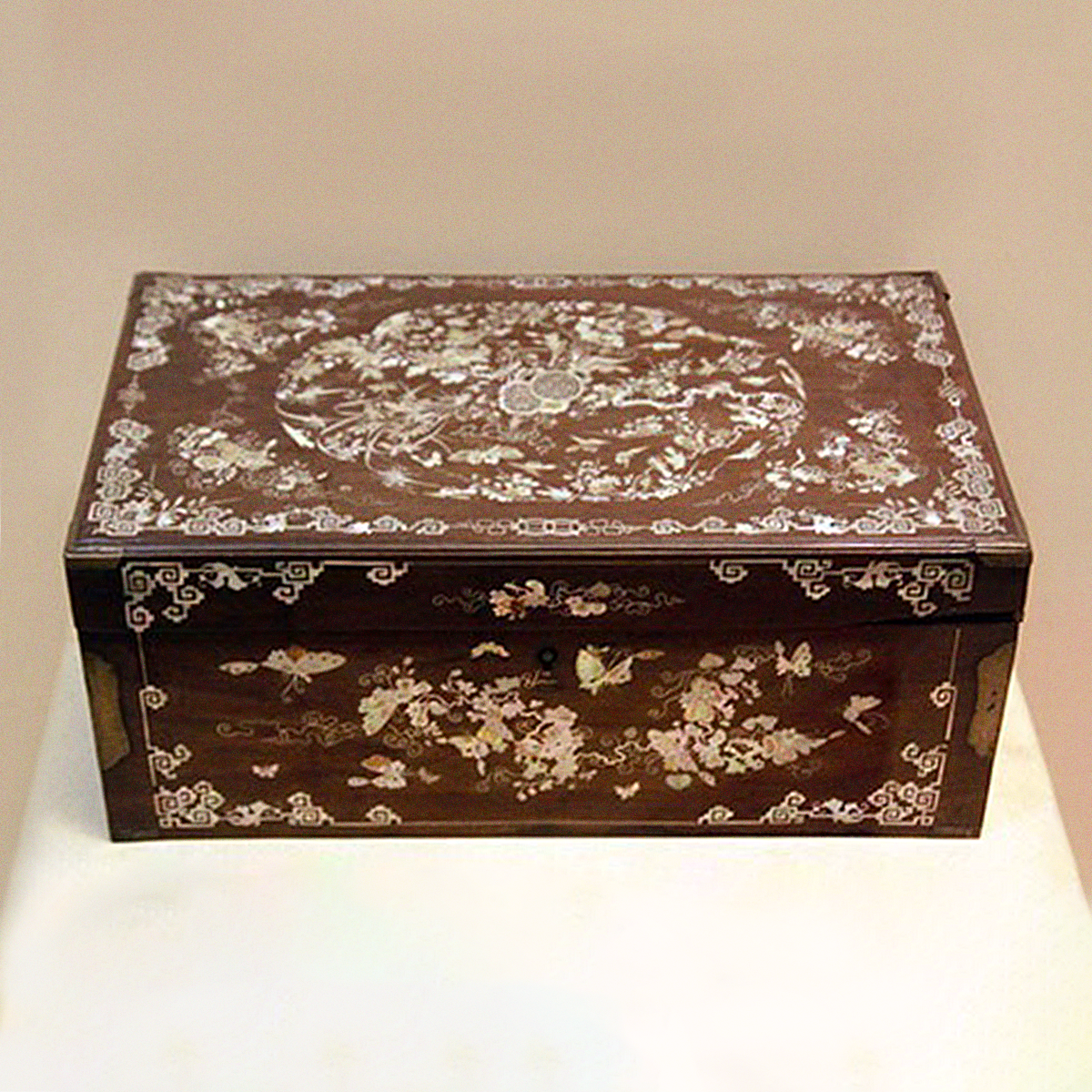
Handicraft village expanded to Hanoi. The Craft Father of this region is Truong Cong Thanh. He was a general under the Ly dynasty who was proficient in literature and martial arts and had participated in making a resounding victory in Nhu Nguyet River with King Ly Thuong Kiet. Leaving the army, he returned to his hometown, began to learn and founded the famous nacre mosaic craft in Chuon Nghe village.
Mosaic is increasingly developed; more materials are applied. Initially, the artisans only inlaid on wood, then nacre or seashells, snail shells can become their creative inspiration. By the Tran Dynasty, the profession of inlaying shells was quite skillful. The peak was in 1289, mosaic products were selected by the court as a gift to the Nguyen Dynasty in China.
When Europeans came to Vietnam was also the time when mosaic villages in the local areas developed dramatically in both quantity and quality. Each mosaic product has been elevated to a work of art with extremely high sophistication and ingenuity.
The pinnacle art of traditional mosaics also attracts the French. In 1868, after conquering The Southern, General Pierre-Paul de La Grandière asked the Hue court to send two good mosaic workers to Saigon to pass on the profession. In 1877, Vietnamese snail mosaics were officially promoted to the world when the dynasty sent products to France to attend the Exhibition Fair.
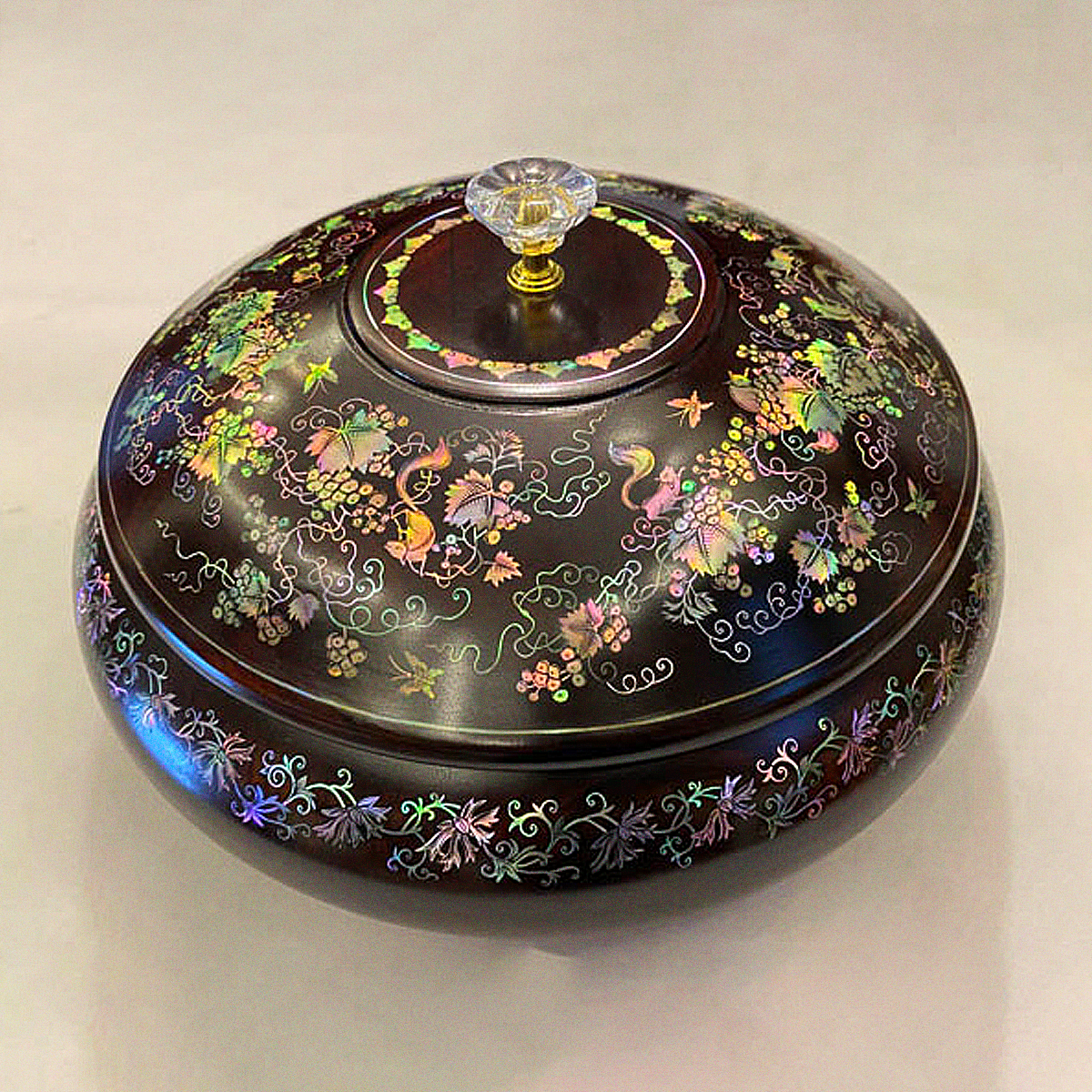
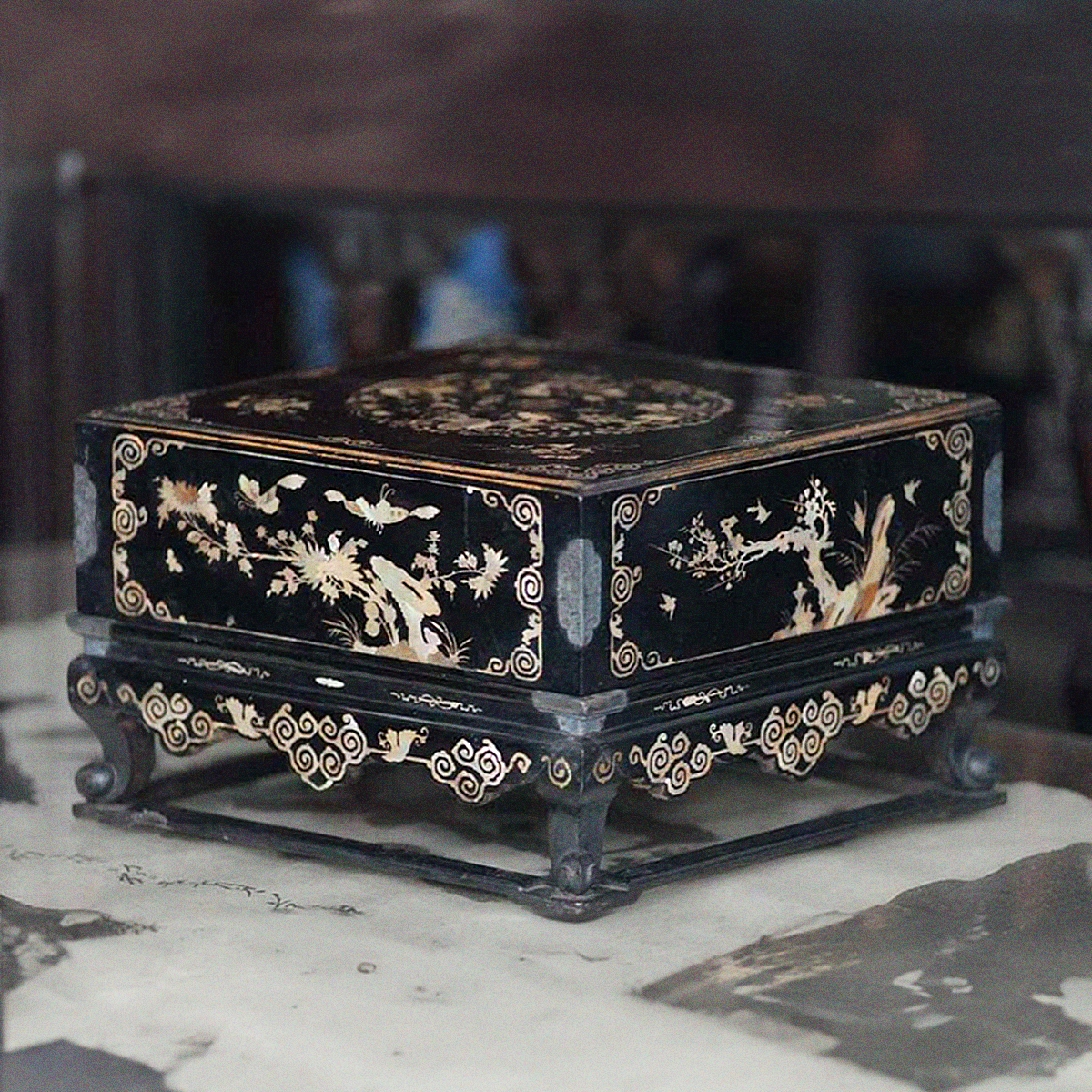
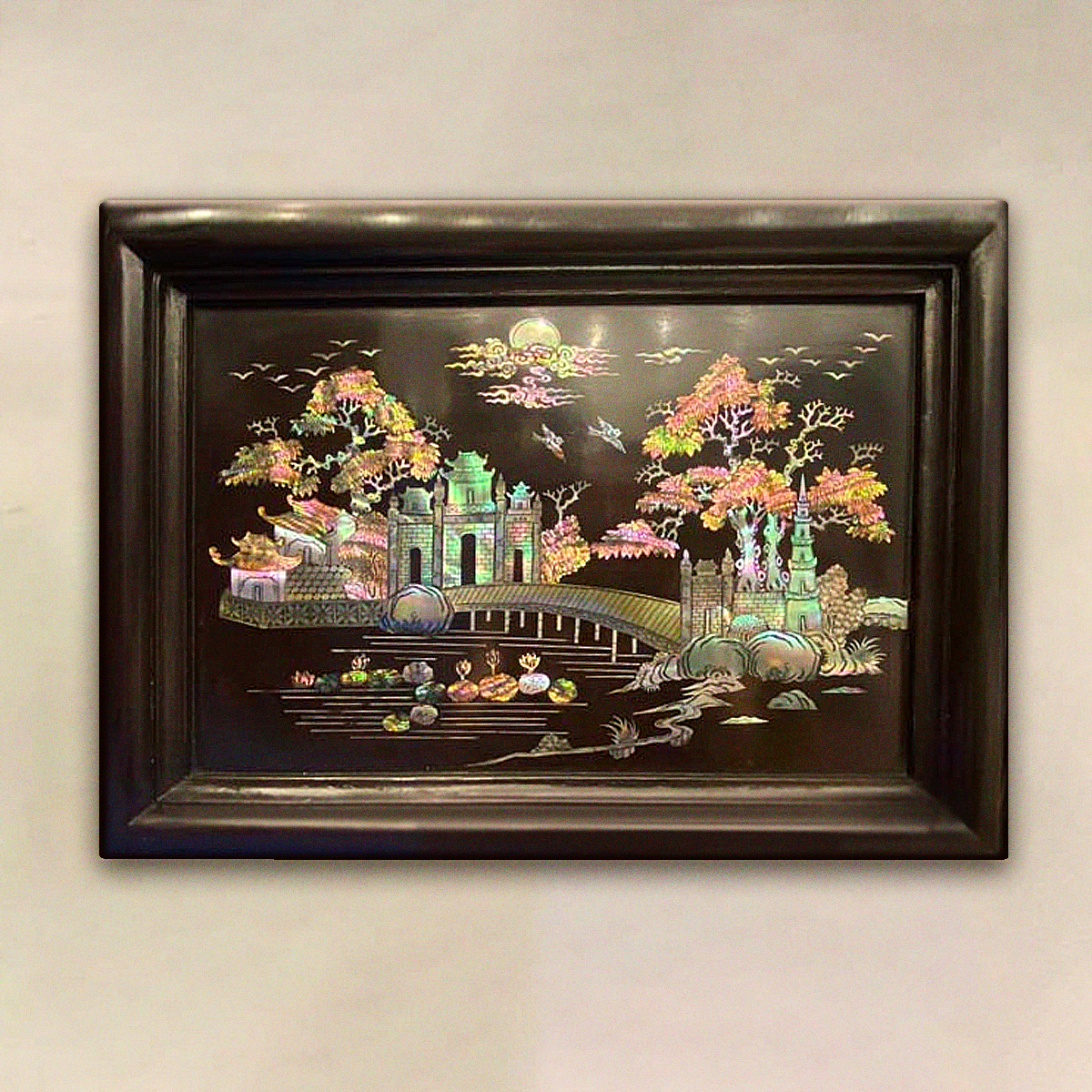
CRAFTING PROCESS
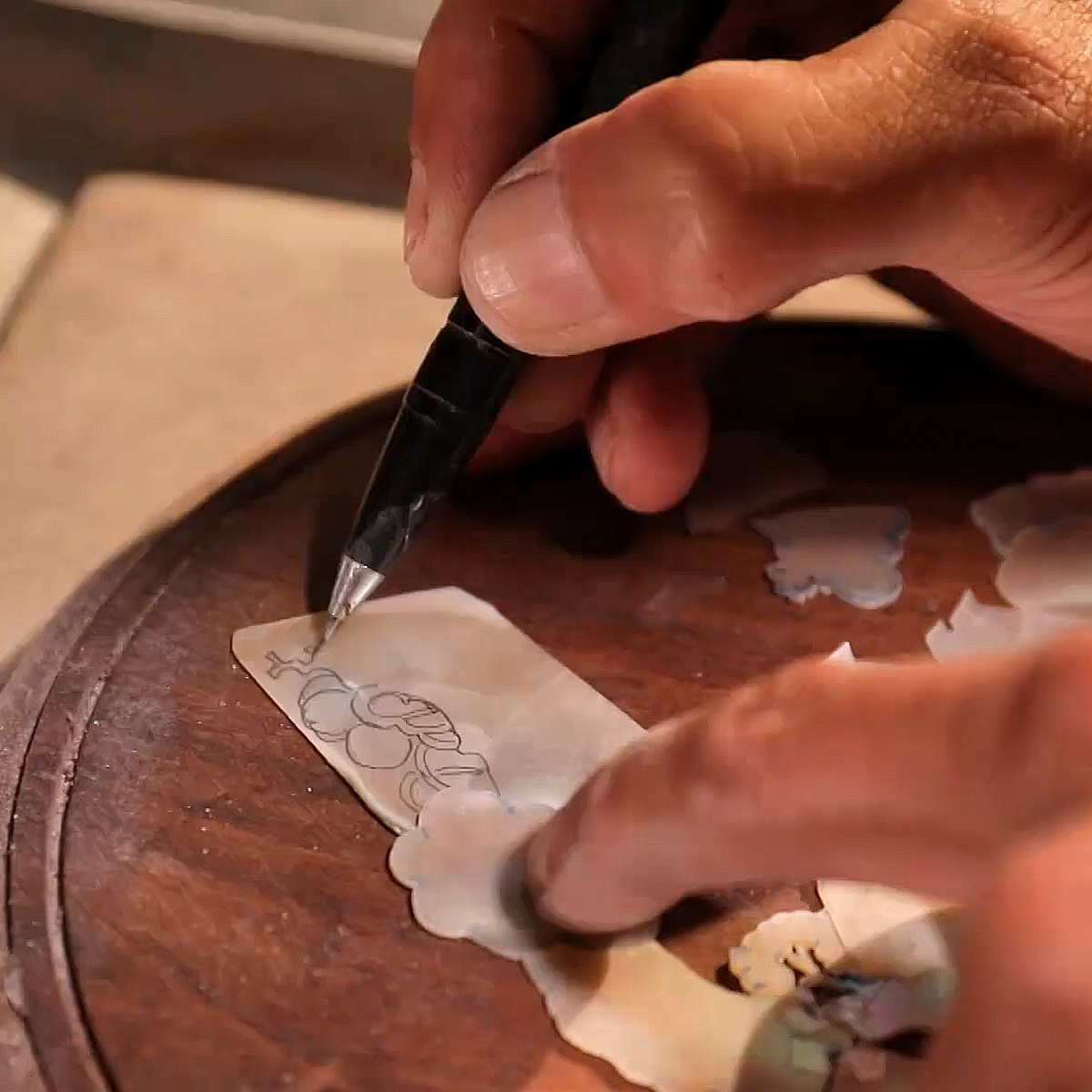
STAGE 1
DRAWING SAMPLE
A pearl mosaic product is a result of serious artistic labor. Produce ideas with patterns and textures suitable for materials is an extremely important stage. The artist will usually show the idea on the sample drawing and then, depending on the reality, will evaluate and select the most standard model to perform the mosaic.
Workers can create drawings according to their ability or at the request of customers. The requirements for a sample drawing must be meticulous, clear and highly accurate in order to ensure the best quality of products.
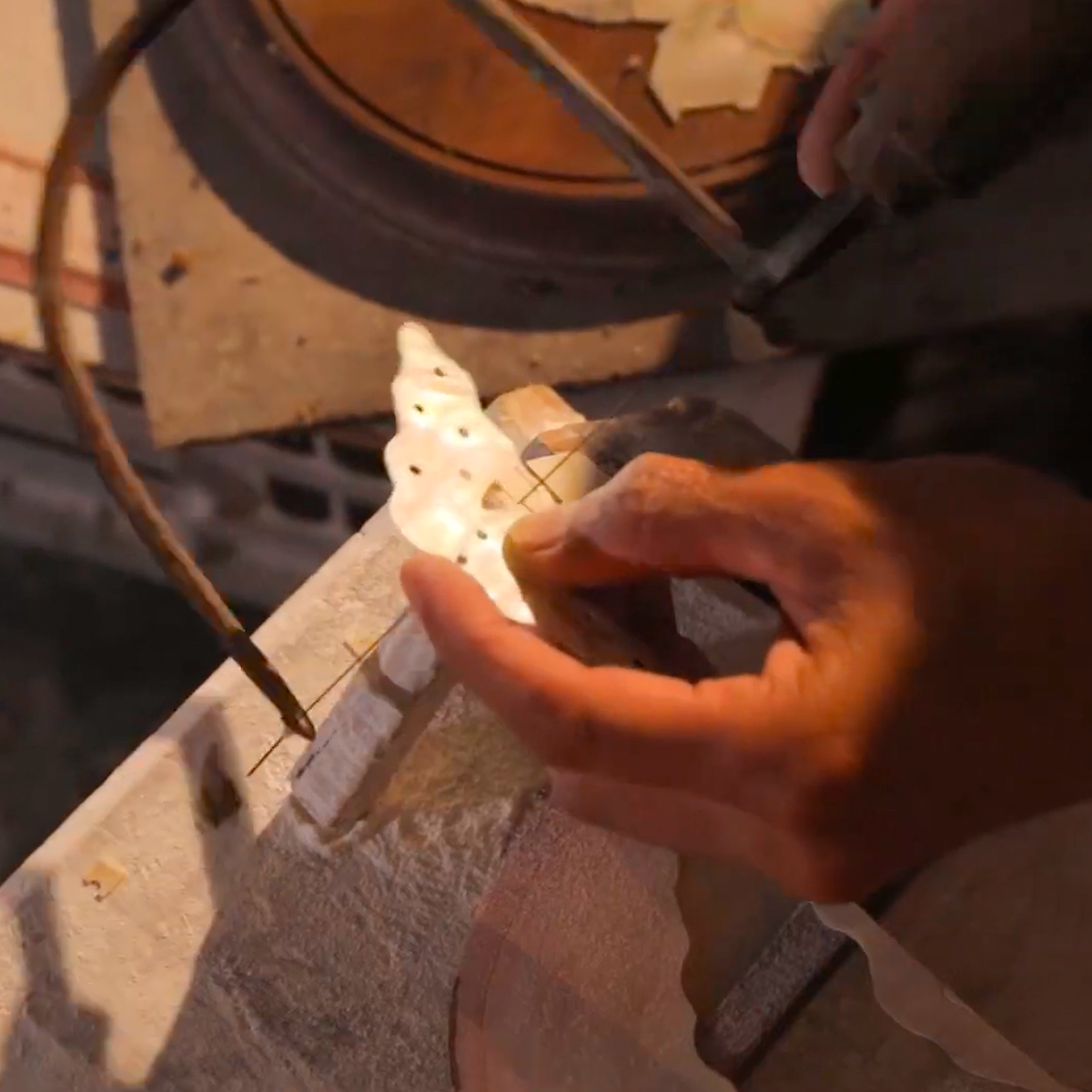
STAGE 2
SHAPING PEARL
One of the factors that make up a beautiful mosaic work is the material. To be able to create a shape that matches the idea of the drawing, the artist must choose the right material. This job is quite difficult and complicated, requiring the craftsman to have a lot of experience and knowledge to be able to exude the sophistication of the painting.
Sawing is one of the difficult stages that requires meticulousness and high precision. The mussel mosaic artist needs to cut and chisel so that the mussels and snail pieces must remain intact in shape and color, then grind, fire, soak in alcohol, then cut and trim the small pieces into suitable patterns with the picture.
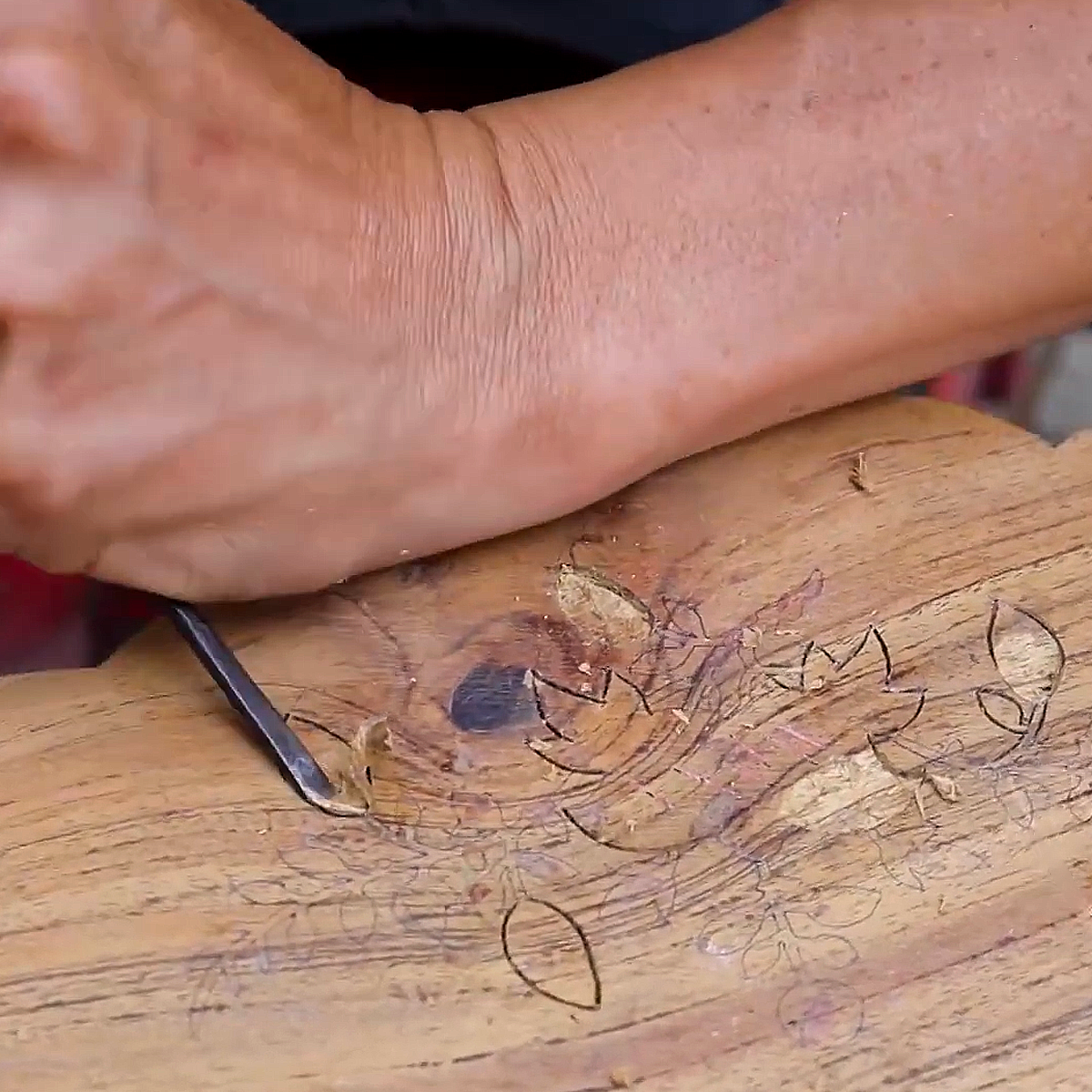
STAGE 3
WOOD CHISELING
Pearl mosaic is a job that requires carefulness and ingenuity in each stage. At the wood chisels stage requires meticulous, high caution because the process of wood chiseling and carving is the link between the idea and the actual product. Each chisel product itself is a great painting because it is created by talented hands and sharp eyes of the artisan.
In order to perform this step smoothly, accurately and quickly, workers must have 4-6 years of experience in carpentry.
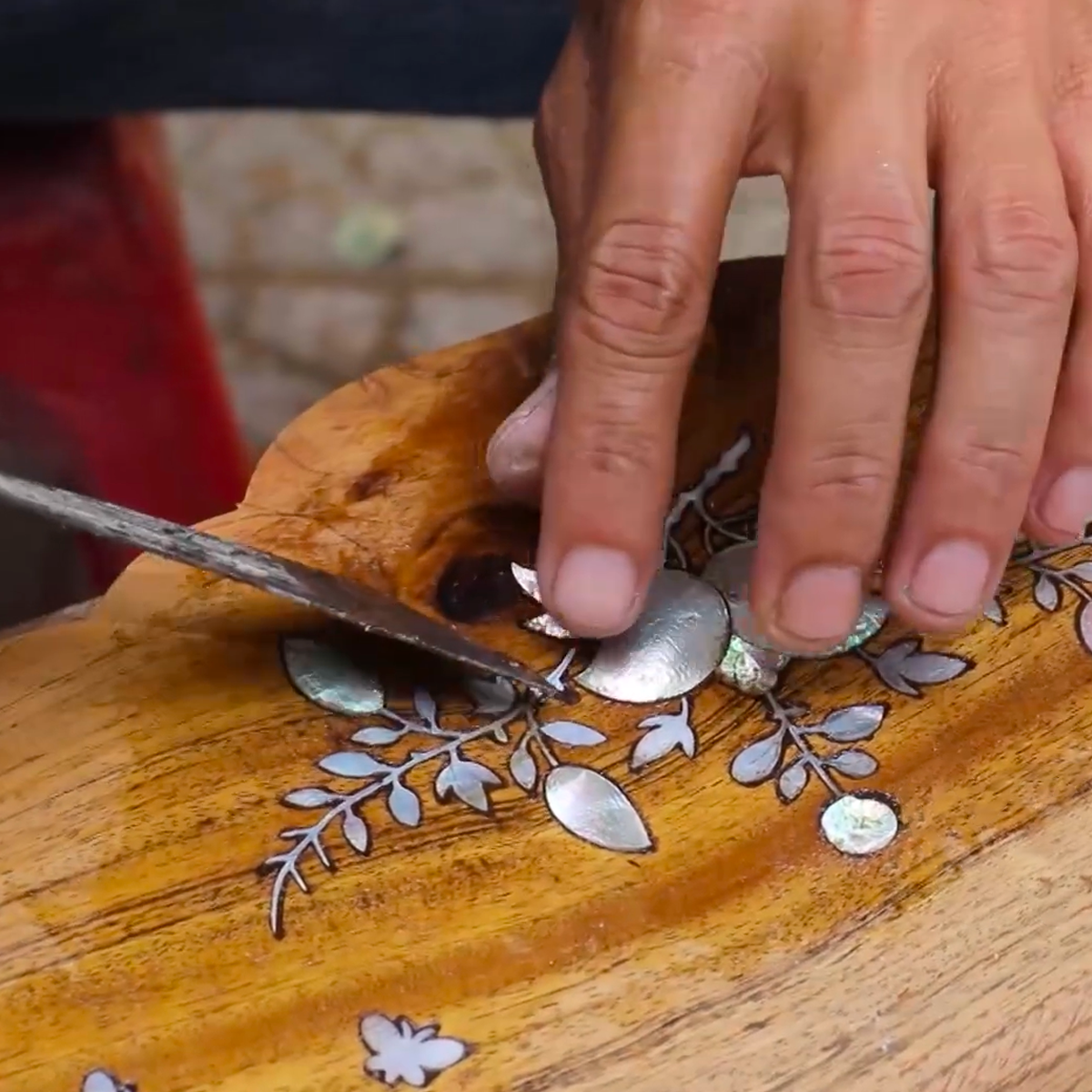
STAGE 4
ATTACH PEARLS TO WOOD
This step is quite a feat because it needs to ensure that the previously shaped pearl must fit in the previously chiseled pattern positions. The collection of pearl pieces will be carefully selected to be able to create a unique picture with high aesthetics.
Usually, the craftsman will attach the floating pearl on the wooden surface. More creative people choose to chisel and sink the pearl to the surface to create a certain depth and sophistication according to the idea of the design.
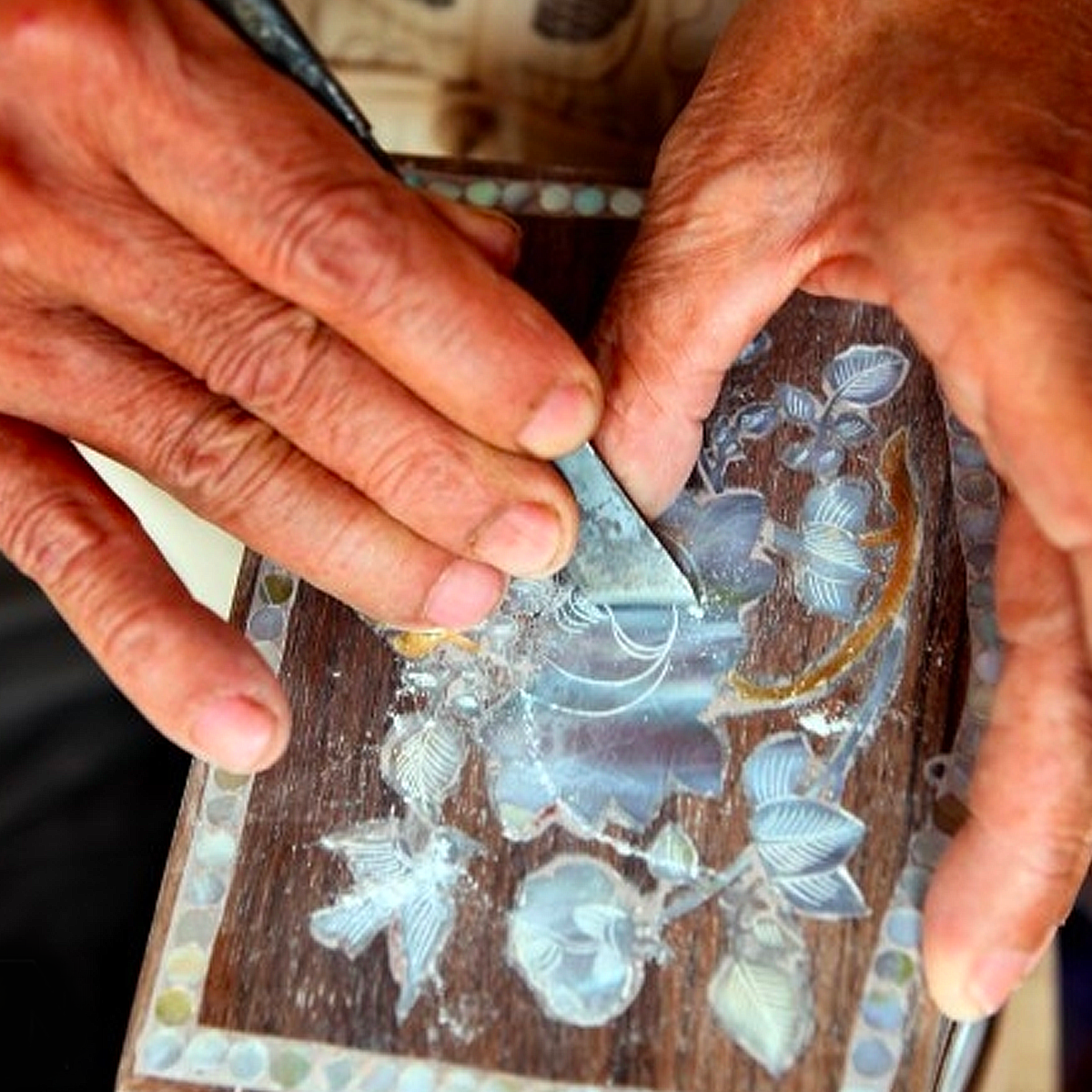
STAGE 5
SHARPEN MOSAIC TO CREATE CURVES
After the picture is done shaping, the mosaic worker will perform grinding and rough polishing so that the pieces fit and smooth on the wood surface.
On the other hand, they will continue to trim to create sharp and delicate lines for the picture. At this stage, the craftsman must have high expertise and good skills to be able to manipulate meticulously and carefully to create the most unique pearl mosaic picture.
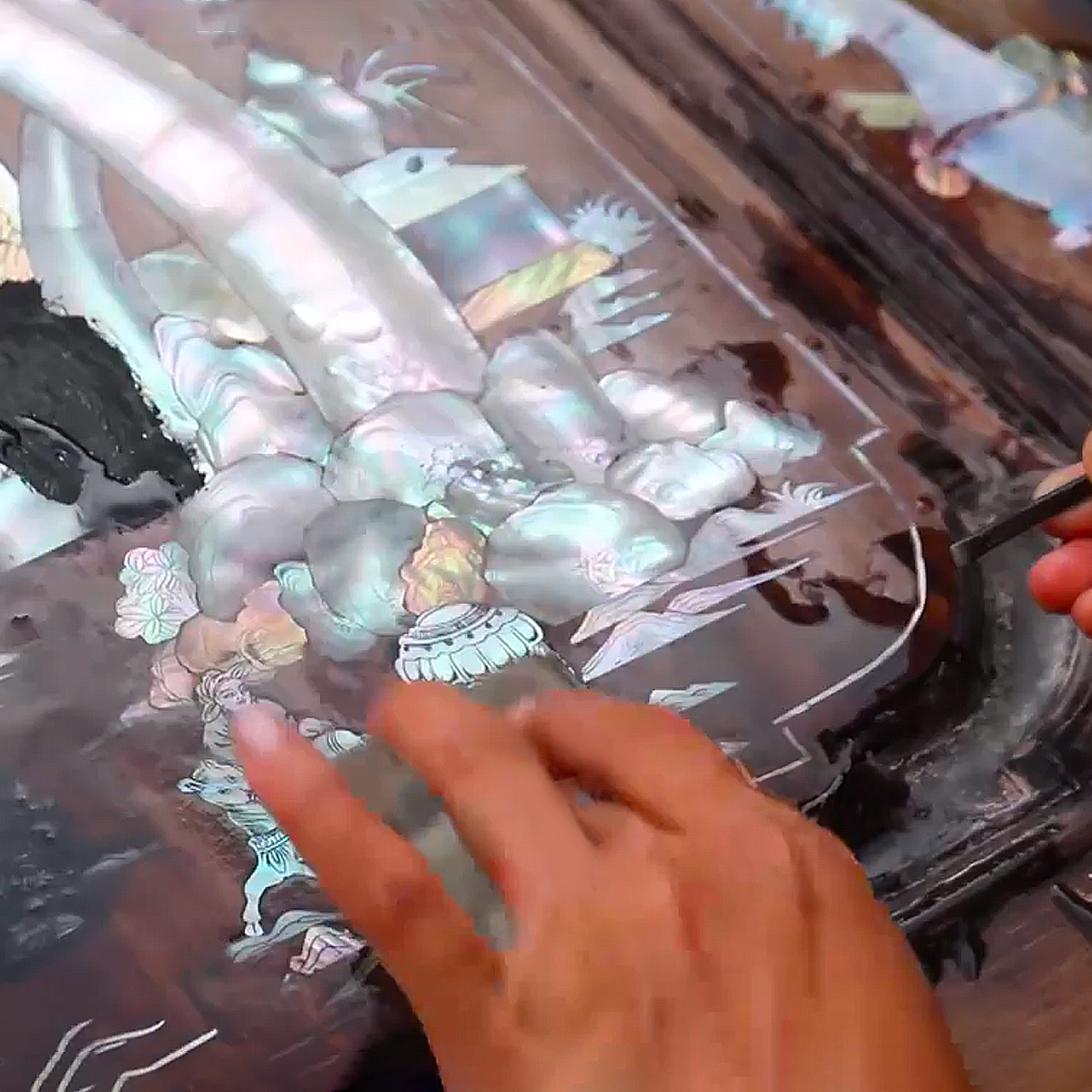
STAGE 6
USING BLACK POWDER TO HIGHLIGHT THE TEXTURE
To complete the mosaic, black powder is used to highlight and brighten each carved line. Mosaic creations after powder coating will be dried for 1 day before grinding and varnishing to complete the work.
The process of finishing a mosaic work takes a lot of time and effort and requires the artist to have a certain level of skill and aesthetic level. That is why a pearl mosaic product usually takes 1-3 months to complete.
REVITALIZING & PRESERVING
This selection requires the performer to have a high aesthetic sense. Each picture is assembled from many different pieces, so the color and shape must be really harmonious and delicate. From rare shells in seas around the world, artisans have created many unique mosaics pictures.
Products with pearls inlaid in traditional craft villages are particular so it is difficult for them to compare with mass-produced products in term of competency. The process of inlaying pearls requires meticulousness and ingenuity to every detail, requiring the craftsman to have full qualifications and carving techniques.
The 4.0 era has developed at a dizzying speed. Many young people are no longer interested in traditional craft villages. It is very difficult to train a generation of young people to have them enthusiastic about the profession.
With the love for traditional values and respect for the national quintessence, BLUSAIGON has gradually incorporated the art of pearl inlay into its signature products. BLUSAIGON's pearl pen line not only helps preserve the grace of the craft village but also shows the beauty of the homeland's culture.
After many difficulties, there are times when the mosaic profession seems to have been lost, but the true artisans still have a passion for the job, revitalizing wishing to preserve and promote the quintessential value of the millennial tradition. With the concern of revitalizing and preserving the beauty of the hometown craft village, BLUSAIGON has created products imbued with Vietnamese folklore traditions that captivate people heart.
The most valuable thing is that the development of BLUSAIGON is always based on preserving the beauty of craft villages. BLUSAIGON is proud to be a brand with the mission of revitalizing and preserving the cultural value of thousands of years of Vietnamese traditional craft villages.



